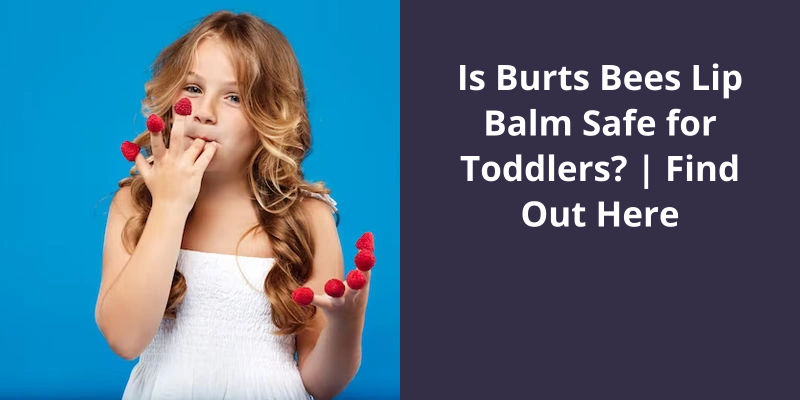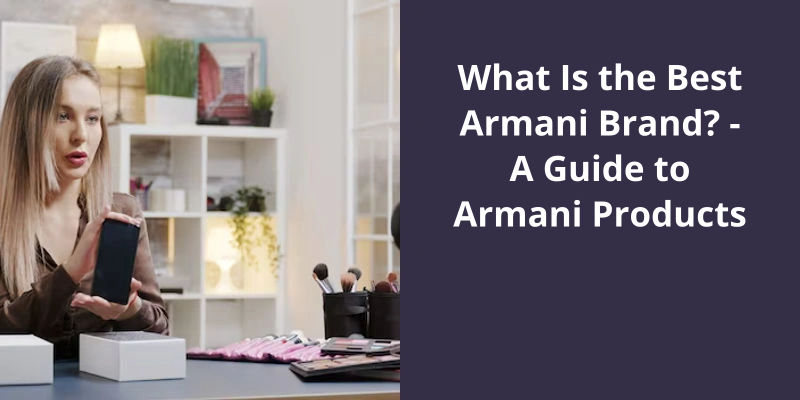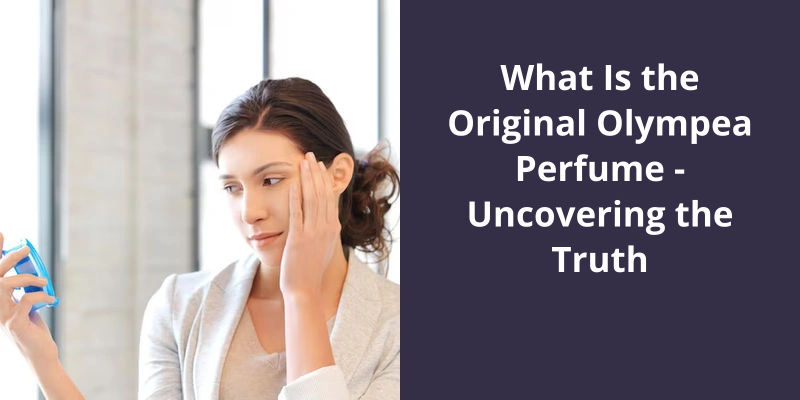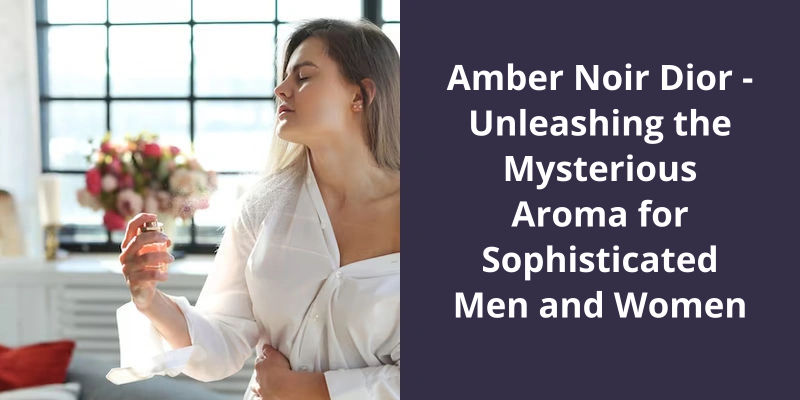Burts Bees Lip Balm is generally regarded as safe for toddlers. It’s made from natural ingredients, which include beeswax and vitamin E. However, despite its natural formulation, it’s still essential to watch for any allergic reactions. Children have sensitive skin and could be allergic to any of the balm’s constituents. Thus though it’s generally safe, always monitor your toddler’s reaction when using the product for the first time. Ensure that your toddler doesn’t ingest the product as it’s meant for topical use only. In case of any unexpected reaction, discontinue use and consult a pediatrician.

Is Vaseline Safe to Put on Toddlers Lips?
It’s a common concern for parents to wonder about the safety of the products they use on their children, especially for something as delicate as their infants lips. In most cases, it isn’t advisable to use lip balms or other products that contain camphor, as it can be hazardous to the health of the baby. This is particularly true in the case of toddlers, as their immune system is still developing, and they’re more vulnerable to chemical exposure than adults.
If you need to apply something to your toddlers chapped lips, a small bead of petroleum jelly such as Aquaphor or Vaseline can be a safe alternative. These products are specifically formulated to moisturize and protect the delicate skin on your babys lips, with minimal risks of adverse reactions. They’re hypoallergenic and gentle, which makes them suitable for use on children of all ages, including infants and toddlers.
Overuse of these products can lead to a buildup of unwanted substances in the sensitive skin around the mouth, making it more difficult for the skin to breathe and absorb nutrients. This can result in dry, chapped, and irritated lips, which may require medical attention if left untreated.
It’s best to avoid products that contain additives, fragrances, or other chemicals that can be harmful to toddlers delicate skin. If you’ve any concerns about which products to use or whether a specific product is safe for your toddler, don’t hesitate to consult with their pediatrician. Your childs pediatrician can provide you with personalized advice on the best ways to care for your toddlers delicate skin, including advice on which products to use and how often to apply them.
When it comes to caring for your toddlers chapped lips, it’s crucial to weigh the benefits and risks of different products before using them.
Natural Alternatives to Petroleum Jelly for Toddlers’ Lips.
- Coconut oil
- Shea butter
- Beeswax
- Cocoa butter
- Almond oil
- Olive oil
- Aloe vera gel
- Lanolin
- Avocado oil
Now that we’ve established that Burt’s Bees lip balm is safe for babies, let’s take a closer look at some of the reasons why it’s so highly regarded in the world of baby skincare.
Is Burt’s Bees Lip Balm Safe for Babies?
When it comes to taking care of your babys delicate skin, it’s important to use products that are gentle and safe. Burts Bees, a popular natural skincare brand, is a great choice for parents who want to use natural, chemical-free products on their little ones skin. Burts Bees baby products are made with 99% natural ingredients and are specifically formulated for babies, including new-borns.
Many parents are concerned about the safety and purity of the products they use on their babies, and with good reason. Traditional baby products are often filled with synthetic ingredients that can be irritating and damaging to delicate skin.
This gentle, natural approach is perfect for babies who need extra care and attention when it comes to their skin.
So, if youre worried about whether Burts Bees lip balm is safe for babies, rest assured that it’s – and that the entire Burts Bees baby range is designed to be gentle, safe, and effective.
What Are Some Common Chemicals Found in Traditional Baby Products, and Why Are They Problematic for Babies’ Skin?
- Fragrances: Many traditional baby products contain synthetic fragrances, which can irritate a baby’s delicate skin and trigger allergic reactions.
- Parabens: These are synthetic preservatives used to extend the shelf life of baby products. Parabens have been linked to hormone disruption and have been found in breast milk in some studies.
- Sulfates: These are commonly used as foaming agents and are found in many shampoos and body washes. Sulfates can dry out a baby’s delicate skin and cause irritation.
- Phthalates: These are a group of chemicals used to soften plastics and are often found in baby lotions, shampoos, and powders. Phthalates have been linked to hormone disruption and have been banned from use in some countries.
- Triclosan: This is an antibacterial agent commonly found in hand soaps and sanitizers. Triclosan has been linked to hormone disruption and bacterial resistance.
- Formaldehyde: This is a preservative used in some baby products, such as baby wipes and shampoos. Formaldehyde can irritate a baby’s skin and has been linked to cancer in some studies.
It’s important to take extra precautions when it comes to the health of our little ones. While chapstick may seem like a harmless solution for chapped lips, it isn’t recommended for children under the age of two. As we explore this topic further, we will delve into why it isn’t safe and offer alternatives to keep your baby’s lips moisturized and healthy.
Can I Put Chapstick on My 2 Year Old?
Babies and toddlers have very sensitive skin, and using any product, including chapstick, can aggravate their delicate skin and cause allergic reactions. In fact, many pediatricians advise parents to avoid using any unnecessary products on babies so as not to irritate their skin.
It’s not uncommon for children to accidentally ingest a small amount of chapstick, which can be harmful or even toxic. Some chapsticks contain ingredients like peppermint oil, which can cause severe stomach upset if ingested.
While it may be tempting to use chapstick on your childs chapped lips, there are other alternatives that are safer for babies and toddlers. One of the best options is to use a petroleum jelly-based lip balm, which is relatively safe and gentle on a childs skin.
Ultimately, it’s always best to consult with a pediatrician before using any product on your child, especially if they’re under two years of age.
While it may seem like a quick fix for chapped lips, it can cause irritation, allergic reactions, or even injury if ingested accidentally. Instead, opt for gentler alternatives, like petroleum jelly-based lip balms or coconut oil.
Parents always want the best for their children, especially when it comes to their health and hygiene. This is why they often have questions about what products are safe to use on delicate toddler skin. When it comes to Vaseline and it’s suitability for two-year-olds, it’s essential to explore the various aspects of the product to make an informed decision.
Is Vaseline Safe for 2 Year Old?
However, it’s always best to check with your pediatrician before introducing any new products to your childs skin care regimen. They may have specific recommendations based on your childs individual needs and any existing skin conditions.
One thing youll want to keep in mind when using Vaseline on a two-year-old is to avoid applying it to any broken or irritated skin. While it can provide a protective barrier to help soothe and heal dry, chapped, or cracked skin, it’s important to ensure that the area is clean and free from infection before applying any product.
Another consideration is the potential for Vaseline to be ingested if it’s applied to areas near the mouth, such as the lips. While it’s generally safe if a small amount is swallowed, it’s best to avoid applying it to areas where it’s likely to be licked off or ingested, especially if your child has a tendency to put their hands or objects in their mouth.
Just be sure to read labels carefully, avoid any potential allergens or irritants, and consult with your pediatrician if you’ve any concerns.
Alternatives to Vaseline for Children’s Skin Care.
Vaseline isn’t the only option for children’s skin care. There are many alternatives like coconut oil, olive oil, shea butter, and petroleum-free jelly. These alternatives are natural, hypoallergenic, and safe for sensitive skin.
When it comes to taking care of your baby’s delicate skin, it’s important to select products that are safe and gentle. One common concern many parents have is whether petroleum jelly is a safe option for their baby’s lips. Fortunately, there’s good news for parents who want to use this time-tested remedy for chapped lips. Petroleum jelly is often recommended as a safe and effective way to soothe and protect your baby’s lips. However, it’s important to use the product correctly and take some precautions to ensure your baby’s safety.
Is Petroleum Jelly Safe for Babies Lips?
Petroleum jelly, also known as petrolatum, is a non-toxic and highly moisturizing substance that’s been used for generations to treat dry, cracked or irritated skin. It’s a byproduct of the oil refining process and is made up of a mixture of hydrocarbons that form a protective barrier on the skin. While it’s generally regarded as safe for adults, many parents wonder if petroleum jelly is safe for babies lips.
In fact, it’s often recommended by pediatricians as a first-line treatment for chapped lips or dry skin. Because it’s so mild and has no additives, it’s less likely to cause an allergic reaction or irritation than other products.
However, it’s important to note that the American Academy of Pediatrics advises parents to avoid putting anything on their babies lips until they’re at least a month old. This is because newborns are still adjusting to the outside world and may have trouble regulating their body temperature, which can make them more susceptible to dehydration. Additionally, young babies may accidentally ingest the jelly if it’s applied excessively or too close to their mouth.
Too much jelly can create a sticky, uncomfortable mess that may be difficult to remove. A small dab on the tip of your finger will often be sufficient to cover both lips. It’s important to spread it evenly and gently across their lips, avoiding any areas that may be cracked or irritated.
While it’s an excellent moisturizer, too much of a good thing can be harmful. Overuse of petroleum jelly can actually decrease the skins natural ability to produce it’s own oils, leading to drier skin over time.
As with any product, it’s important to use it sparingly and avoid getting any inside their mouth.
What Are Some Alternative Natural Remedies for Chapped Baby Lips?
Chapped lips for babies can be treated by some natural remedies. Some natural remedies include applying coconut oil or petroleum jelly, breast milk, or using a humidifier to add moisture to the air.
Now that we know lip balm can be used on newborns, it’s important to discuss the different types of lip balm available and what to look for when choosing the right one for your baby.
Can You Put Lip Balm on Babies?
One of the most common concerns for new parents is how to properly care for their newborns delicate skin. One area that often gets overlooked is the lips. Babies can easily get dry, chapped, or cracked lips just like adults can, and these conditions can be uncomfortable and painful for them. In order to prevent this from happening, many parents wonder if it’s safe to use lip balm on their babies.
Nipple cream is another option for moisturizing a babys lips. Look for a nipple cream made with all-natural and organic ingredients that will be gentle on your babys skin.
When applying lip balm or nipple cream to your babys lips, be sure to use a clean finger or a q-tip to avoid introducing bacteria to the area. Apply a small amount to the lips as needed throughout the day. It’s important to remember that babies have a natural tendency to put their hands and everything in their mouth, so it’s best to avoid using flavored or scented lip balms that might entice them to ingest the product.
One of the most important is to make sure they’re drinking enough breast milk or formula. Dehydration can cause dry, cracked lips, so it’s important to keep your baby well-hydrated. Additionally, using a humidifier in your babys room can help to prevent dry skin in general, including dry lips.
With a little bit of care and attention, parents can keep their babys lips smooth, soft, and healthy.
What Are the Common Causes of Dry, Chapped or Cracked Lips in Babies?
- Dehydration
- Exposure to cold and dry air
- Breathing through the mouth
- Sucking on pacifiers or thumbs
- Reaction to certain medications
- Vitamin deficiencies
- Allergies or sensitivities to certain foods or products
- Medical conditions such as eczema or psoriasis
Conclusion
In conclusion, when it comes to choosing skincare products for toddlers, it's important to prioritize safety and natural ingredients. With ingredients like beeswax, sunflower seed oil, and coconut oil, parents can be assured that they're providing their child with a high-quality and safe product. The Vanilla Bean flavor is sure to be a hit with kids, making it a great choice for parents looking to introduce their little ones to the world of skincare.





